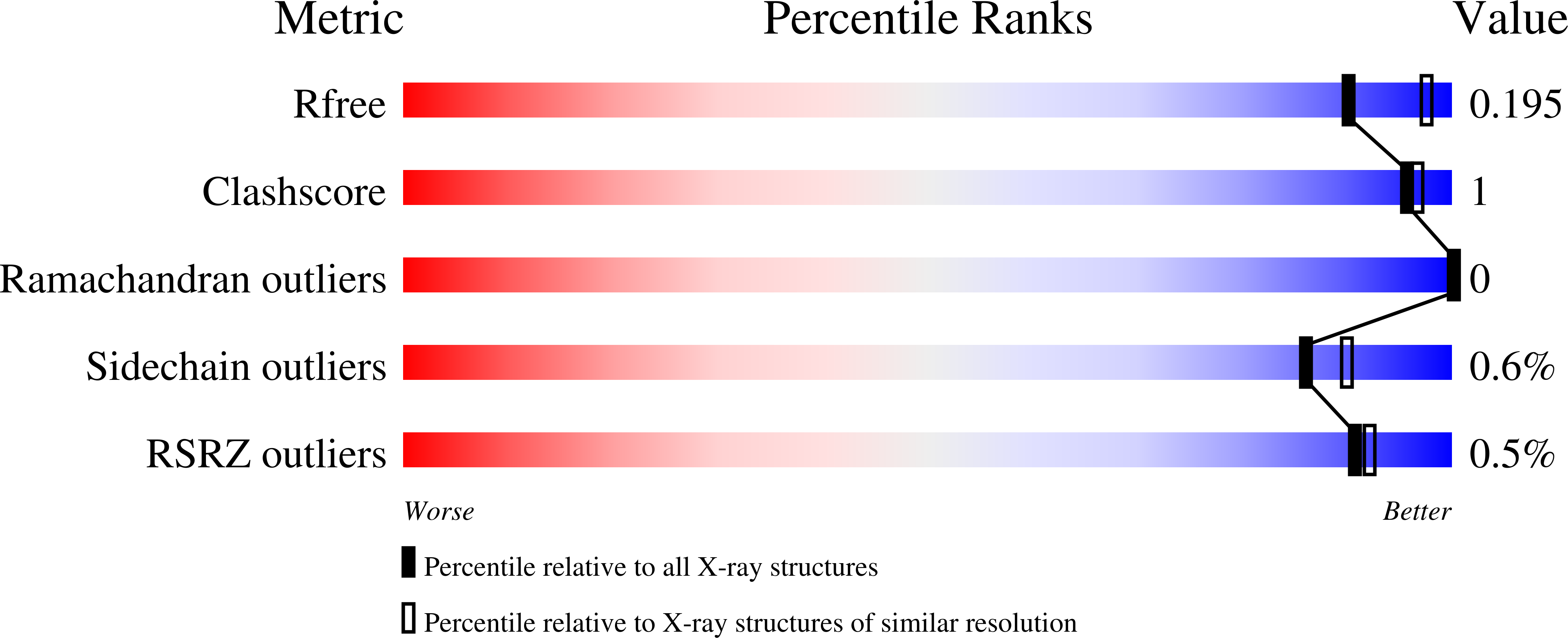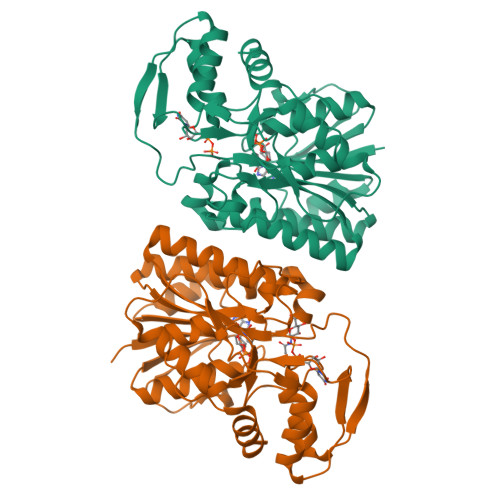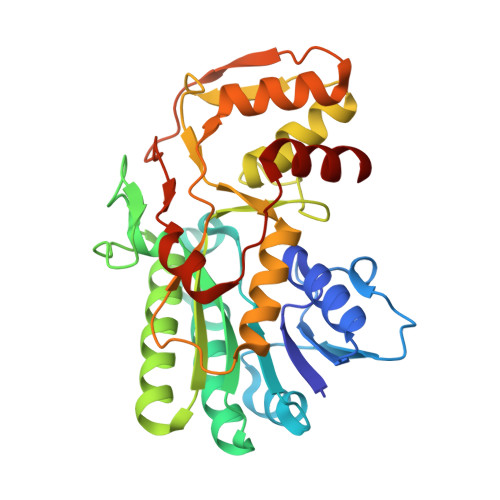PelX is a UDP-N-acetylglucosamine C4-epimerase involved in Pel polysaccharide-dependent biofilm formation.
Marmont, L.S., Whitfield, G.B., Pfoh, R., Williams, R.J., Randall, T.E., Ostaszewski, A., Razvi, E., Groves, R.A., Robinson, H., Nitz, M., Parsek, M.R., Lewis, I.A., Whitney, J.C., Harrison, J.J., Howell, P.L.(2020) J Biological Chem 295: 11949-11962
- PubMed: 32601062
- DOI: https://doi.org/10.1074/jbc.RA120.014555
- Primary Citation of Related Structures:
6WJ9, 6WJA, 6WJB - PubMed Abstract:
Pel is a GalNAc-rich bacterial polysaccharide that contributes to the structure and function of Pseudomonas aeruginosa biofilms. The pelABCDEFG operon is highly conserved among diverse bacterial species, and Pel may therefore be a widespread biofilm determinant. Previous annotation of pel gene clusters has helped us identify an additional gene, pelX , that is present adjacent to pelABCDEFG in >100 different bacterial species. The pelX gene is predicted to encode a member of the short-chain dehydrogenase/reductase (SDR) superfamily, but its potential role in Pel-dependent biofilm formation is unknown. Herein, we have used Pseudomonas protegens Pf-5 as a model to elucidate PelX function as Pseudomonas aeruginosa lacks a pelX homologue in its pel gene cluster. We found that P. protegens forms Pel-dependent biofilms; however, despite expression of pelX under these conditions, biofilm formation was unaffected in a Δ pelX strain. This observation led us to identify a pelX paralogue, PFL_5533, which we designate here PgnE, that appears to be functionally redundant to pelX In line with this, a Δ pelX Δ pgnE double mutant was substantially impaired in its ability to form Pel-dependent biofilms. To understand the molecular basis for this observation, we determined the structure of PelX to 2.1 Å resolution. The structure revealed that PelX resembles UDP-GlcNAc C4-epimerases. Using 1 H NMR analysis, we show that PelX catalyzes the epimerization between UDP-GlcNAc and UDP-GalNAc. Our results indicate that Pel-dependent biofilm formation requires a UDP-GlcNAc C4-epimerase that generates the UDP-GalNAc precursors required by the Pel synthase machinery for polymer production.
Organizational Affiliation:
Program in Molecular Medicine, The Hospital for Sick Children, Toronto, Ontario, Canada; Department of Biochemistry, University of Toronto, Toronto, Ontario, Canada.




















